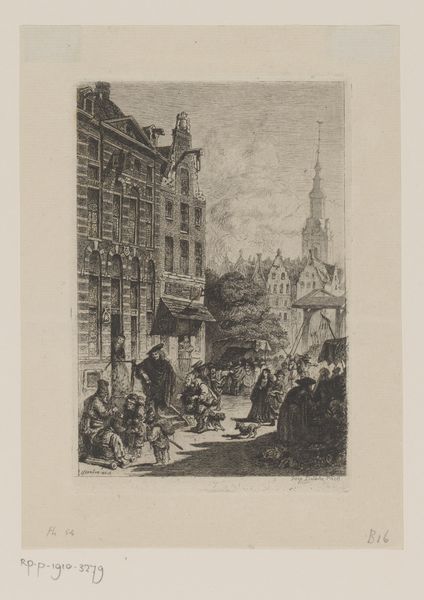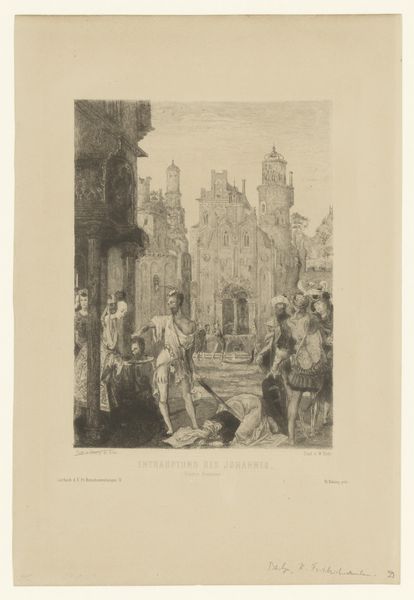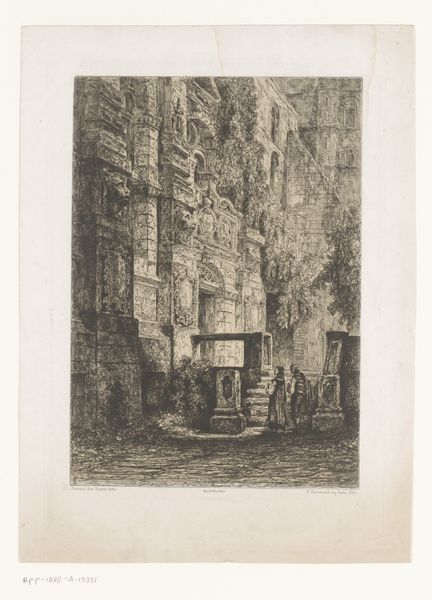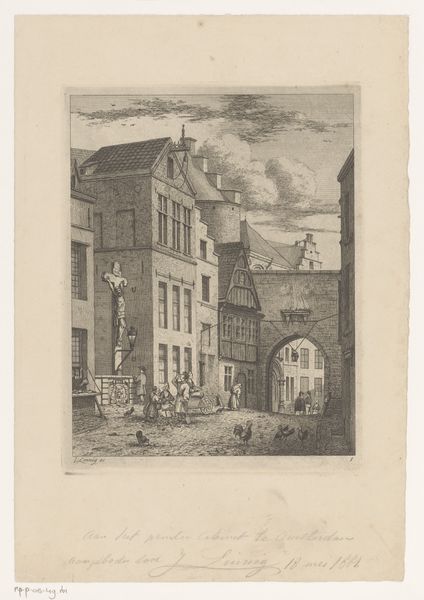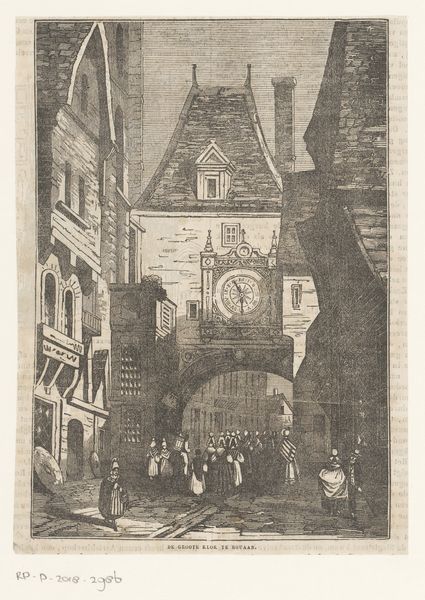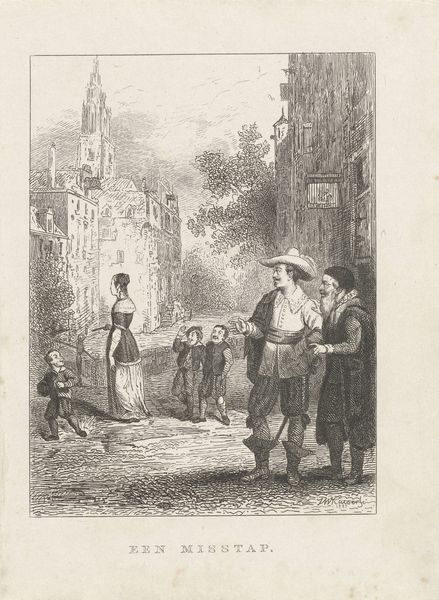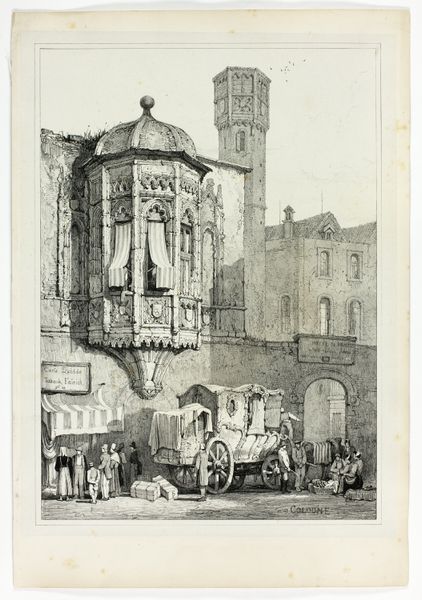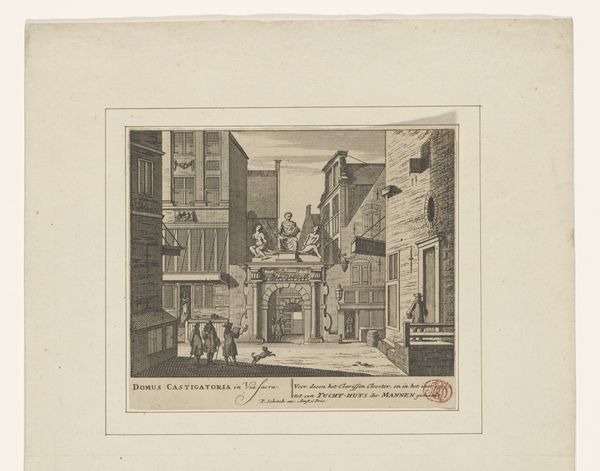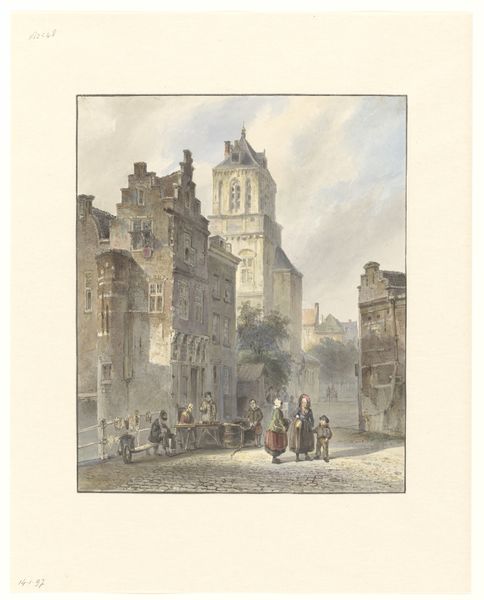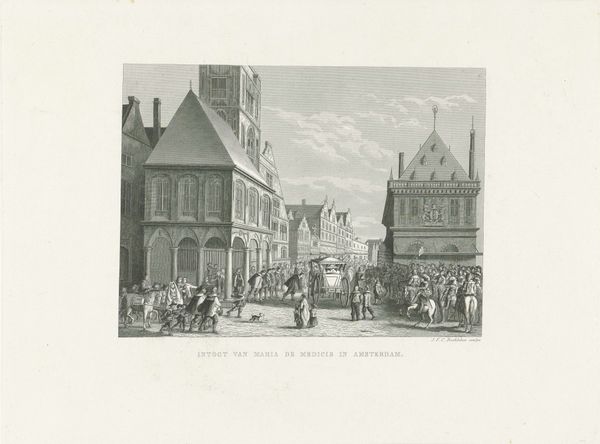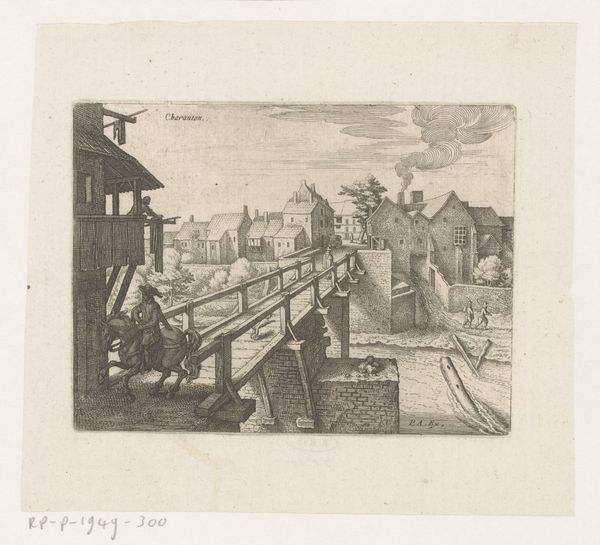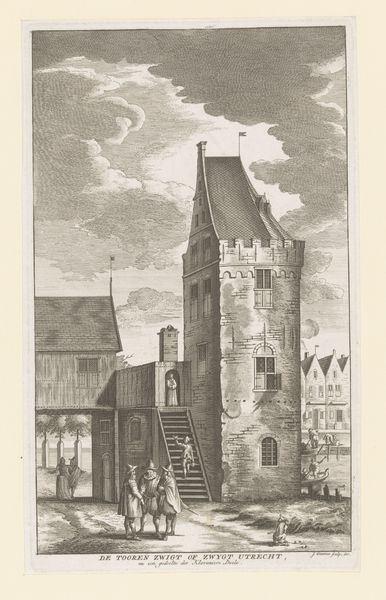
print, engraving
# print
#
cityscape
#
genre-painting
#
engraving
#
realism
Dimensions: height 180 mm, width 138 mm
Copyright: Rijks Museum: Open Domain
Editor: This is "Fountain in the Grand Market in Tours", made in 1855. It's an engraving, so a print, and looking at it now, I'm struck by how detailed it is, capturing so much of the daily life happening in this market square. What do you see in this piece? Curator: For me, this image immediately speaks to the proliferation of print culture in the 19th century. Here's a cityscape made accessible to a broad audience through the means of mass production. We can consider not only the aesthetic qualities of the engraving, but also the material conditions that enabled its creation and distribution. Who consumed this image, and how might its portrayal of daily life in Tours shape their understanding of the world? Editor: That's a great point. It was distributed as part of "L'Illustration, Journal Universel," which democratized art to a wide public audience. Thinking about production, it's interesting how engraving allowed for a very detailed scene to be reproduced at scale, almost like a photograph before photography took over. Curator: Precisely! And let's not overlook the labor involved. Skilled engravers translated an original artwork, transforming the handwork into a replicable commodity. How does the act of translating place through image then become labor to disseminate it? Editor: It feels very different appreciating an image intended for a universal journal than seeing, for instance, an oil painting. It kind of flattens the artistry somehow, which is sad, but I understand its historical relevance to consumption, dissemination and access. Curator: I agree. Analyzing it in terms of process and production forces us to reconsider conventional ideas about value and craftsmanship, right? Editor: Right. It also really makes you question our consumption, access, and definition of "art." Thanks so much.
Comments
No comments
Be the first to comment and join the conversation on the ultimate creative platform.
